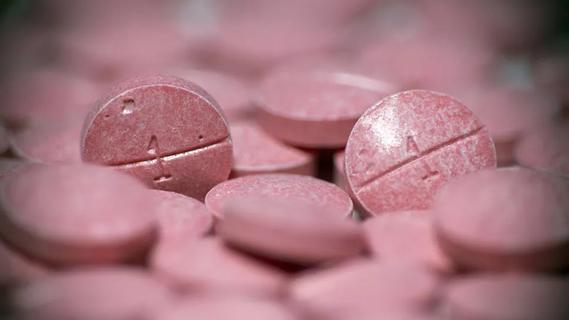Decode your discharge and what it means for your health

When you pull down your underwear, the last thing you want is cause for concern. But vaginal discharge can be alarming, especially if you don’t usually experience it.
Advertisement
Cleveland Clinic is a non-profit academic medical center. Advertising on our site helps support our mission. We do not endorse non-Cleveland Clinic products or services. Policy
In some cases, vaginal discharge signifies a health concern. But it can also be part of normal, healthy bodily function. So, don’t panic just because you see a little bit of it down there.
“Not every vaginal discharge means something,” says Ob/Gyn Oluwatosin Goje, MD. “Vaginal discharge can be normal or abnormal.”
How are you to know which is which? One key factor can indicate what may be at play — color. That’s right: The hue of your vaginal discharge can help your doctor determine what’s going on, whether it’s a problem and how best to treat it, if necessary.
Vaginal discharge is fluid that comes from your vagina. It’s produced by your uterus, cervix or your vagina itself when they discard fluid and old cells.
If you’ve ever heard someone say that “your vagina is a self-cleaning oven,” this is, in part, what that means. When your reproductive system is functioning properly, it naturally clears out the old stuff to make room for the new.
And vaginal discharge can run a spectrum of colors, from healthy to concerning. Possible hues include:
Dr. Goje explains some of the possible colors of your vaginal discharge and what they may be trying to tell you about your health.
Advertisement
Healthy vaginal discharge ranges from clear to a milky white, with as many shades in between as you’ll find in a paint store. And it’s common for the texture and color to change throughout your menstrual cycle.
“If your discharge is within this color range, the most important things to pay attention to are texture and smell, which can signify issues,” Dr. Goje says.
Just before your ovary releases an egg (known as ovulation), your discharge may be clear and wet or gummy — like the consistency of an egg white. “Mid-cycle, some people know when they’re ovulating because they see a stringy, yolk-like discharge, which comes from the cervix,” Dr. Goje says.
How to deal: If you’re hoping to get pregnant, this type of discharge tells you it’s time for sex. And if you don’t want to get pregnant, use contraception or hit pause on having sex until you’re done ovulating.
Thick, cottage cheese-like vaginal discharge is typically a telltale sign of a yeast infection, which happens when there’s an imbalance in the natural yeast in your vagina. This discharge often comes with other symptoms, like vaginal itching and burning.
How to deal: Yeast infections can be treated with over-the-counter medications like tioconazole (Monistat®) or with a prescription pill or vaginal cream from your doctor. “If these don’t work, your doctor can test to see whether another fungus is present,” Dr. Goje says.
Cloudy white discharge can be a sign of gonorrhea (known as “the clap”), a sexually transmitted infection — but just as often, gonorrhea has no symptoms. “Untreated gonorrhea can lead to pelvic inflammatory disease,” Dr. Goje warns, “so it’s important to get tested.”
How to deal: Your doctor can test you for gonorrhea and treat it with antibiotic pills or shots.
Pink’s a pretty color and all, but it can be worrisome to see it in your undies. Often, pink discharge signifies the start of your upcoming period and is nothing to worry about.
Sometimes, though, it can signal non-period-related bleeding, like:
It could also signify abnormal uterine bleeding, which can have a variety of causes.
How to deal: Some pink discharge may be normal for you, if you’re prone to spotting before your period starts. But if it’s new, prolonged or otherwise concerning, make an appointment to speak with your doctor.
A red or brown color is usually a sign of blood in your discharge, and it can even range all the way to an almost-black hue. And though that might sound scary, it’s not necessarily a problem.
Advertisement
Red or brown discharge is often due to spotting (bleeding between your periods), which isn’t uncommon or necessarily problematic. But it can also have underlying causes like:
How to deal: If spotting is normal for you, don’t worry about it. But if it’s new or accompanied by other symptoms, or if you suddenly have a lot of reddish-brownish discharge, talk to your doctor about the possibility of abnormal menstruation or other concerns.
This is another color combo that usually signifies a situation down south. Here’s what may be happening if you have yellowish or greenish vaginal discharge.
Most people associate yeast infections with chunky, white discharge, but they can also cause creamy discharge that is off-white or yellowish.
How to deal: Head to the pharmacy for an over-the-counter treatment, or see your doctor for a prescription.
Up to 70% of people with this sexually transmitted infection don’t notice symptoms. But it can also cause vaginal discharge that’s green, yellow, or gray. It can be very thin in texture or it may be frothy and bubbly.
How to deal: See your doctor for antibiotics — usually, a single dose of metronidazole or tinidazole — to clear up this infection and get things back to normal down there. (Some people may need prolonged treatment for five to seven days.)
Advertisement
This condition shows up most often in post-menopausal women and people assigned female at birth (AFAB) whose estrogen levels have dropped. When your vaginal wall thins, your vagina atrophies, making it inflamed and sometimes painful. Vaginal discharge associated with DIV is yellow to greenish-yellow.
How to deal: DIV can be treated with clindamycin ointment or steroid ointment in your vagina, but you need a prescription from your doctor. “Estrogen cream can also relieve itching, burning and pain from vaginal atrophy,” Dr. Goje notes.
Gray vaginal discharge signifies that something isn’t quite right. There’s one primary culprit, but it’s not the only possible explanation.
Bacterial vaginosis is the most common cause of unusual vaginal discharge, happening when the bacteria in your vagina grows out of whack. This leads to an imbalance and causes an increase in discharge — usually discharge that’s thin, grayish-white and fishy smelling.
“The discharge and odor are most notable after sex, or you might notice them before and after your period,” Dr. Goje says.
How to deal: Two vaginal ointments — metronidazole gel and clindamycin cream — can treat the infection, and oral forms of the drugs are effective, too. “If you’ve been treated more than three times in a year for BV, consider wearing condoms with sexual intercourse,” Dr. Goje advises.
Advertisement
Grayish discharge may also be a sign of an STI, including some of the ones we’ve already discussed:
How to deal: See your Ob/Gyn for STI testing and appropriate treatment (usually a pill or a regimen of pills to clear things up). If you’re sexually active, be sure to practice safe sex and see your Ob/Gyn annually for your well-woman visit.
Remember: Some vaginal discharge is healthy and standard, and some change in your vaginal discharge can be healthy and standard, too, like throughout your menstrual cycle. But if you notice any unsettling types of discharge — or any that are unusual for you — make an appointment with your doctor or gynecologist.
“Be prepared to discuss the color, consistency and smell of the discharge, as well as any itching and whether it appears related to having sex or your menstrual cycle,” Dr. Goje advises.
“If the first round of treatment doesn’t relieve your symptoms, ask your doctor for more tests. There are many tests out there that labs can run to make a diagnosis of an infection.”
Learn more about our editorial process.
Advertisement

Not all rainbows have gold at the end — the ones our bodies produce offer insight into our health

The vagina is full of healthy and unhealthy bacteria, so discharge can be normal or problematic

This common infection is an imbalance of bacteria in the vagina

Bleeding is a risk and warrants taking care, but the reward of this lifesaving medication is great

Severe and debilitating headaches can affect the quality of your child’s life

Type 2 diabetes isn’t inevitable with these dietary changes

Applying a hot or cold compress can help with pain